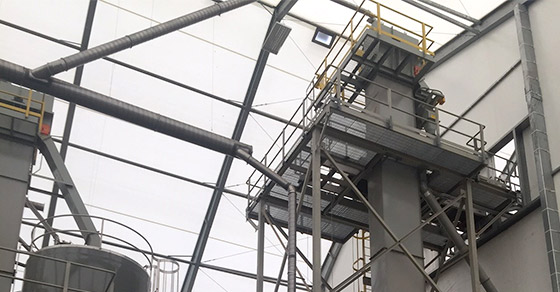Bucket elevators are essential to bulk material handling operations, efficiently transporting materials vertically. However, their performance and longevity depend on proper maintenance procedures. This article explores key best practices in bucket elevator maintenance, focusing on belt/chain tension, casing alignment, and throat plate adjustment. Following these guidelines helps maximize efficiency, reduce downtime, and extend equipment lifespan.
Ensure Proper Belt/Chain Tension
Proper tension of the belt or chain is critical to operational efficiency and equipment longevity. Adequate tension promotes smooth movement, prevents slippage, and reduces wear on the elevator’s mechanical components.
Proper belt or chain tension requires finding the right balance. Tension should be tight enough that buckets don’t “bounce,” but loose enough so as not to put undue stress on the head and boot shafts. It is not uncommon to over-tension the belt or chain in response to slippage or other production challenges, but this leads to excessive wear on the belt/chain and pulleys/sprockets.
At the same time, under-tensioning the belt or chain presents different risks, with potential issues in the form of belt slippage, reduced material throughput, and an increased chance of misalignment or chain derailment. An under-tensioned belt or chain often leads to frequent shutdowns.
In either case, the result is likely to yield increased downtime, lower efficiency, and higher maintenance costs, making proper tension essential.
Signs of Improper Belt/Chain Tension
Signs of improper belt or chain tension include buckets “bouncing” around and potentially hitting the casing interior (indicating tension is too loose). Accelerated wear and/or failure of the shaft/sprocket/pulley is a good indicator that tension is too tight.
It’s important to note, however, that improper tension may not be obvious, instead requiring regular monitoring. Operators or maintenance personnel should routinely check belt or chain tension using a tension gauge, adjusting at both the head and boot sections as needed.
How to Ensure Proper Belt/Chain Tension
The process of managing tension may differ depending on the type of take-up employed.
A screw take-up requires manual adjustment of the threaded screws on each side of the boot pulley. In making adjustments, operators or maintenance personnel must be careful not to over adjust.
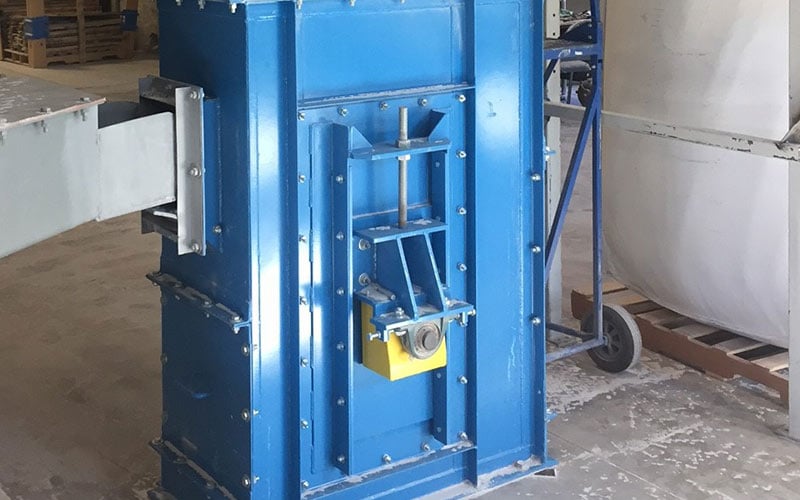
Screw take-up on a bucket elevator
Gravity-style take-ups or GTUs are largely self-monitoring, managing chain tension automatically. Minimal adjustment may be necessary during startup or if production conditions have changed. If the belt is too loose, the GTU may need more weight. If shafts are breaking or the belt is tearing, tension may be too tight.
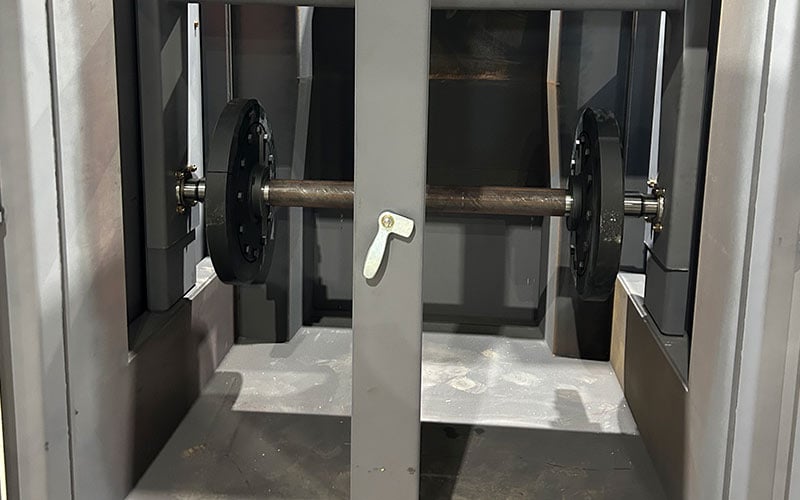
Gravity take-up in elevator boot
It’s also important to recognize that belts and chains stretch over time, with over-tensioning hastening this process. In the case of chain elevators, stretch causes a mismatch between the chain links and sprockets, which prevents the links from seating properly. And while it may be tempting to replace only sections of the chain, this is not recommended, as it leads to uneven wear. Chain stretch is very common in aging equipment, making routine monitoring essential.
Belt elevators may also show signs of stretch and premature wear if not installed or replaced properly; historically it was acceptable to overlap the belt for a section. However, this causes excessive wear, as two belts cannot move around the pulley at the same radius. Belts or belt sections should instead be installed using splices.
Confirm Elevator Casing Support is Adequate
Proper casing support is vital to elevator safety and longevity, helping the elevator to remain solid and stable, despite its moving parts and any external forces acting upon it. Inadequate support is not only a major safety risk, but could also result in catastrophic failure.
Adequate support requires teamwork between the bucket elevator manufacturer and the installation contractor; the OEM provides support guidelines as part of the original equipment design, which the contractor must follow at the time of install. FEECO recommends having the OEM supervise installation to ensure accuracy.
Despite initial proper support, conditions may change over time that could influence the structural integrity of the system, so regular monitoring should always be a part of preventive maintenance practices. This is especially true for elevators operating in outdoor environments where wind and precipitation can affect the equipment. Depending on the process application, corrosion can be detrimental to the steel.
Signs that Casing Support is Inadequate
Several signs may indicate potentially inadequate support, including casing misalignment, excessive vibration sounds during operation, or obvious wear, warping, or deformation of the casing.
Addressing Casing Support
Casing supports, beams, bolts, anchors, and braces should all be inspected as part of regular monitoring. Any worn components, if not replaced, should be carefully monitored for changes, particularly in cases of corrosion, which can compromise structural integrity.
Personnel should ensure proper load distribution to avoid uneven loading of any section. Vibration control measures may also be necessary to fortify elevator support.
In extreme cases, it may be necessary to bring in a contractor to remedy the issue. In settings where damage has occurred, it may be necessary to contact the OEM for replacement parts or sections of the casing.
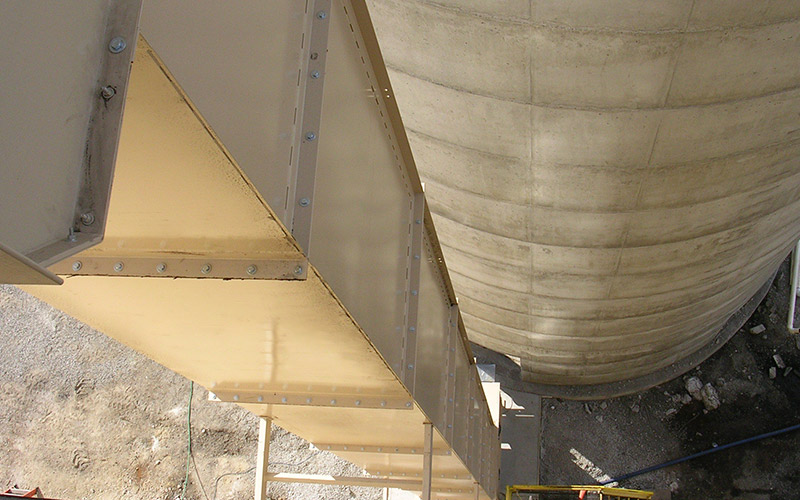
Close-up of bucket elevator casing
Ensure Proper Casing Alignment
As with casing support, casing alignment is also key to the equipment’s structural safety and overall performance and longevity. A leaning elevator could become a major safety hazard, even without the dynamic loads associated with operation. In addition to safety risks, a misaligned elevator can also result in damage or catastrophic failure.
If buckets are allowed to rub against the casing, which is common with misalignment, a host of problems could result, including material spillage, excessive wear, and stress on mechanical components, as well as higher energy costs.
As with casing support, casing alignment is a result of both proper manufacturing techniques and installation practices. The OEM should have stringent quality control procedures in place to ensure precision alignment of the casing during fabrication.
During installation, the contractor must also take measures to properly align the unit in place.
Signs of Casing Misalignment
While a well-fabricated and properly installed elevator generally does not fall out of alignment on its own, environmental factors such as wind loads or other external pressures may cause the unit to become misaligned over time.
As such, operators and maintenance personnel should regularly check for signs of wear or irregularities in bucket movement that could be indicative of misalignment. Personnel can utilize a laser alignment tool or plumb line to check both vertical and horizontal alignment. Bolts holding casing sections together should also be checked and tightened evenly to confirm that no section is tilted or skewed.
Casing alignment should also be confirmed after any major repairs.
How to Address Casing Misalignment
Depending on the severity of misalignment and the skills of the on-site crew, remediating misaligned casing may be as simple as adjusting casing supports, or may call for an external service provider. The plant manager should bring in an expert as soon as wear or damage is noticed on any buckets, chain, belt, or casings.
Ensure Proper Throat Plate Adjustment
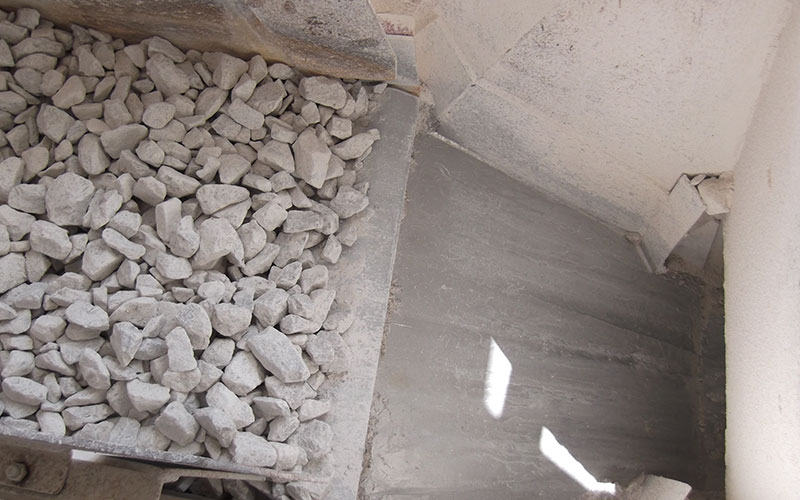
The throat plate controls the discharge of material from the elevator, contributing to smooth, uniform material flow out of the unit. The dynamic load associated with constant discharge can cause the throat plate to fall out of proper position.
If the throat plate is not adequately positioned, material spillage, as well as buildup and blockages, can occur. Uneven wear on buckets and other components may also occur, which can lead to lost material and potential equipment damage.
Further, a misaligned throat plate may also lead to a high level of material recirculation, with the potential to significantly reduce operational efficiency.
Signs that Throat Plate Adjustment is Needed
Various signs may indicate that the throat plate may require adjustment, including non-uniform flow, material spillage, or unexplained blockages within the elevator. High amperage is an indication that buckets are being overloaded. When buckets are not filling or discharging properly, the boot becomes full. Because continuous-style elevators are not designed to dig in the boot, the resulting resistance will increase amps, and the bucket will be prefilled, therefore over-filling the bucket. This will likely cause the elevator to run over its designed capacity. Damage to buckets is also likely to occur.
How to Address Throat Plate Positioning
Operators and maintenance personnel should regularly assess material flow at the discharge point, looking for consistent, uniform flow. If uneven flow is observed, the throat plate should be adjusted according to the original manufacturer’s instructions.
Personnel must be careful to avoid over adjustment; the throat plate should be as close as possible to the buckets without actual contact between the two.
Worn buckets can also cause a gap between buckets and the throat plate. In this case the worn buckets would need to be replaced to resolve the issue.
Confirm Proper Loading
Overloading of buckets is perhaps one of the most common causes of elevator problems; manufacturers want to increase bucket elevator capacity and increasing bucket fill seems like the obvious solution.
A small increase in fill may be permissible in some settings, particularly when buckets are operating below their intended fill level, but it can also lead to problems.
Exceeding the designed load capacity can severely impact the performance of a bucket elevator and lead to excessive wear, making it essential to stay within the specified load limits for both safety and efficiency. Overloading can strain belts, chains, and drives, potentially leading to breakdowns or even catastrophic failure. It can also result in material spillage and loss.
In continuous elevators, overloaded buckets tend to cause the buckets to “dig” in the boot. Continuous-style buckets are not designed for the digging action associated with centrifugal elevators and would quickly be damaged.
Overload of buckets is also likely to occur when damaged or worn buckets are removed but not replaced. If material flow remains the same, the result is more material spread across fewer buckets, and in cases of excessive overload, material spillage into the boot will occur.
Signs of Bucket Overload
In most cases, personnel are already aware that buckets are overloaded. However, signs that otherwise indicate potential overload include material spillage and/or fugitive material in the boot (often with “digging” in the boot in continuous elevators), and overloaded mechanical components.
Addressing Over-Filled Buckets
In the event that buckets are overloaded, the obvious solution is to reduce bucket fill. This may mean reducing feed to the elevator, increasing elevator speed, or otherwise. If buckets were removed and not replaced, new buckets should be added to fill in any gaps.
If plant capacity has increased and the unit can no longer meet facility requirements, elevator replacement may be in order.
Confirm Proper Lubrication of All Parts
As with any type of equipment, proper lubrication of all moving parts is critical to maximizing the equipment’s service life by minimizing friction and preventing overheating of components.
Signs of Poor Lubrication
Signs of inadequate lubrication may or may not be easy to spot. Grinding or other friction-indicating sounds likely indicate an issue, as do overheating components (sometimes indicated by the smell of heat). Unfortunately, poorly lubricated components often go unnoticed until the point of failure.
Addressing Lubrication
Follow OEM recommendations for type and frequency of lubrication for all components. When available, automatic lubrication systems can help to ensure proper lubrication at all times.
Regularly Inspect Equipment & Replace Worn Components
Routine inspection is the first line of defense against high maintenance costs, lost product, and unexpected shutdowns. Operators and maintenance personnel should be properly trained in inspecting their equipment and must conduct regular inspections, looking for visual or auditory abnormalities, as well as other potential signs of wear.
Items to inspect, as well as frequency of inspections, should be predetermined and all inspections and adjustments documented. In addition to the aforementioned components, key items to inspect include:
- Buckets
- Chain/Belt
- Bearings (head shaft and boot/take-up bearings)
- Drive components (motor, reducer, chain, pulleys and sprockets at both head and tail ends)
Any worn items should be replaced as quickly as possible. For this reason, it can be helpful to keep an inventory of spare parts on-hand to avoid lengthy lead times or unnecessary downtime.
Prioritize Housekeeping
Poor housekeeping leads to safety risks, inefficiencies, blockages, and damage to equipment. Allowing dust and debris to build up in and around the elevator increases wear and should be prohibited.
Establish cleaning procedures based on the production schedule, ensuring the surrounding area is free from obstructions, equipment is properly ventilated, and any buildup is removed. If buildup or fugitive material is occurring regularly, the root cause should be investigated and resolved.
Provide Operator Training
While it is not the maintenance crew’s responsibility to ensure operators are trained, the level of operator training can have an impact on maintenance costs and requirements.
Trained operators are key to ensuring that bucket elevators are used properly and safely. Comprehensive training should cover equipment operation, routine maintenance, and emergency procedures. Operators who understand the nuances of proper operation can help identify issues early, as well as maximize performance and longevity.
Operators should always be up to date on the latest operational techniques and safety standards.
An Important Note:
It’s important to recognize that this list is not exhaustive, but provides an overview. Always follow manufacturer recommendations for operating and maintaining equipment. Operators and maintenance personnel should always follow proper safety protocols when inspecting or maintaining equipment and should avoid making adjustments to operating parameters without the supervision of the OEM.
Conclusion
Bucket elevators play a critical role in bulk material handling, but their efficiency and longevity depend on proper maintenance practices. By adhering to best practices such as ensuring proper belt/chain tension, adequate casing support and alignment, and correct throat plate adjustment, operators can significantly reduce downtime, minimize wear on components, and extend equipment service life. Additional efforts, such as routine lubrication, monitoring for bucket overload, and maintaining a clean environment, further contribute to reliable operation and system safety. While these guidelines provide a solid foundation, operators should always prioritize routine inspections and follow manufacturer recommendations to ensure optimal performance and prevent costly failures.
FEECO not only engineers heavy-duty bucket elevators built for the toughest demands but also delivers comprehensive parts and service support. From maintenance to upgrades, we’ve got you covered. To learn more about our bucket elevators or service support, contact us today!



